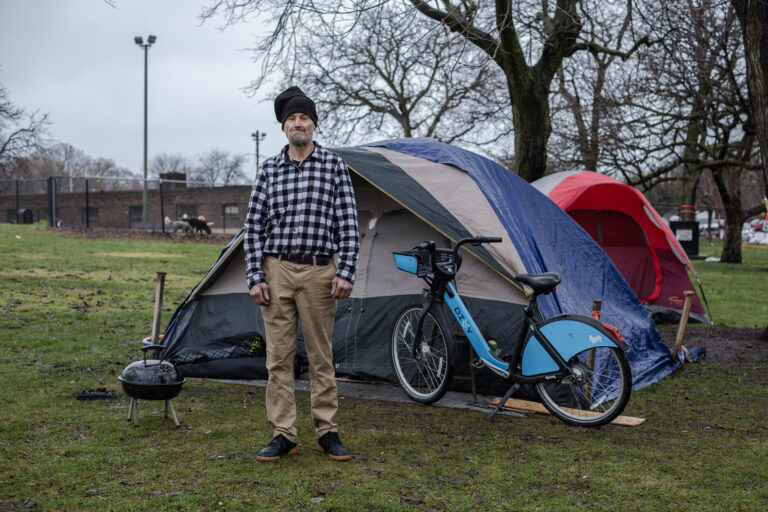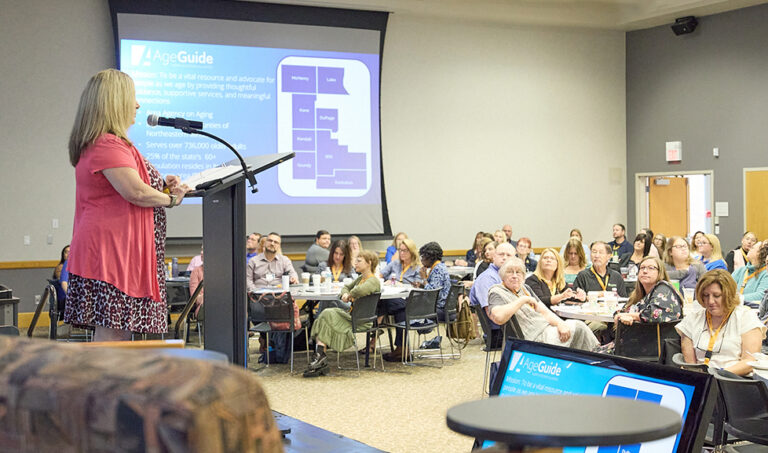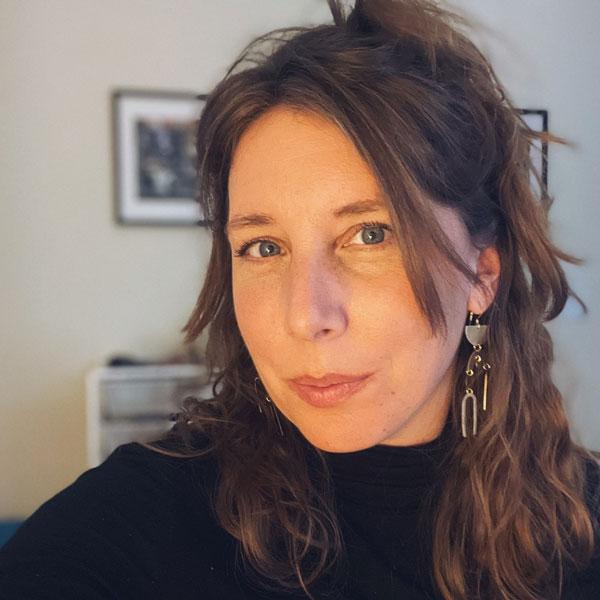
An award-winning journalist, Katie has written for Chicago Health since 2016 and currently serves as Editor-in-Chief.
How access to housing and medical care is making communities healthier.
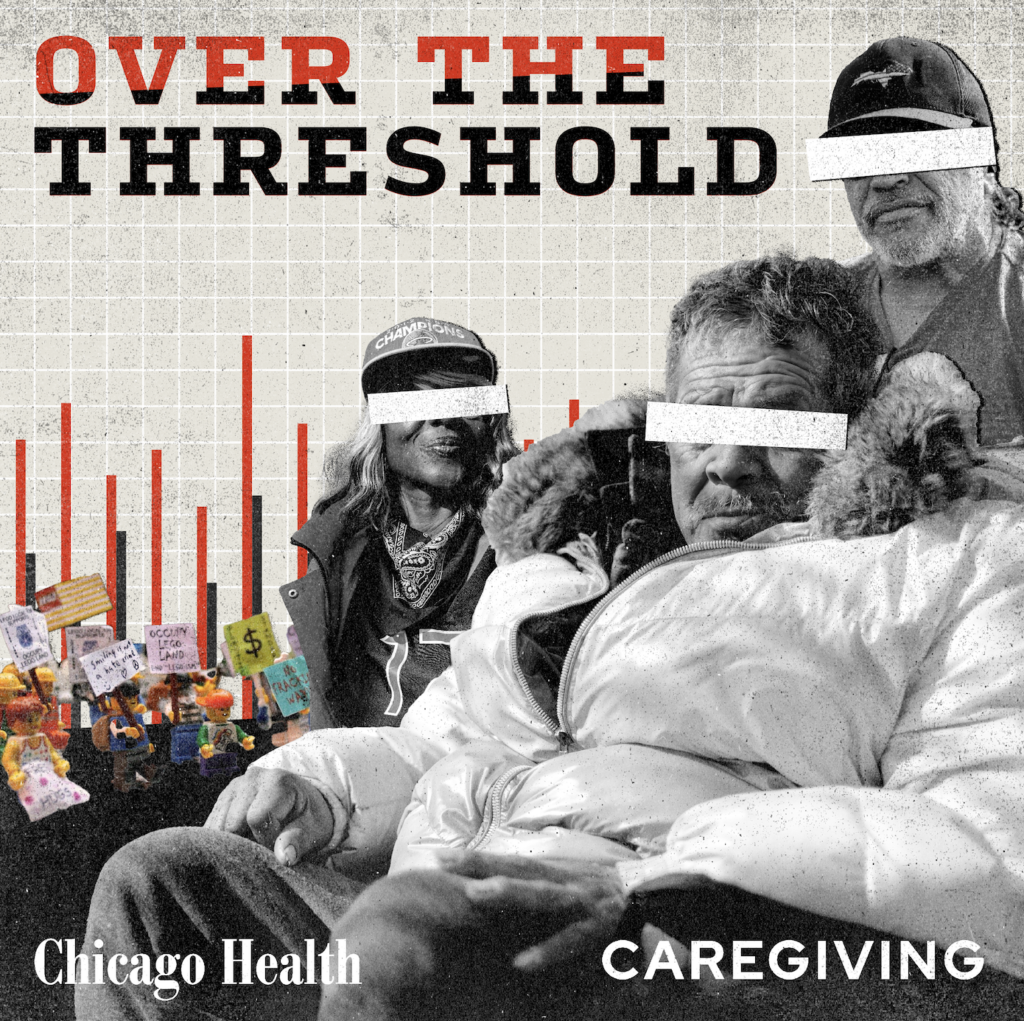
This is the final piece in a 4-part series on older adults and homelessness. Part 3 highlights street medicine. Read part 2 here, about women and homelessness. Find part 1, an overview, here.
Scott Anthony Franklin has been many things in his 61 years: a sous chef, a poet, homeless.
“At 21 years old, I opened the Gold Coast Hotel in Vegas as a sous chef. That was big, big for me,” Franklin says. “I was cranking 3,500 sets of eggs every night. I used to have egg dreams.”
He had come a long way from when he was born — an event that nearly killed him. Franklin’s lungs collapsed at birth, and he spent six months in an incubator. Until age 6, he had to sleep in an inclined position, and he remembers sitting alone indoors, watching kids playing outside. He couldn’t join them because of his lungs.
“That which doesn’t kill you makes you stronger,” Franklin says now, on a chilly April morning. He’s standing in the light rain outside his friend’s tent in Chicago’s Uptown neighborhood.
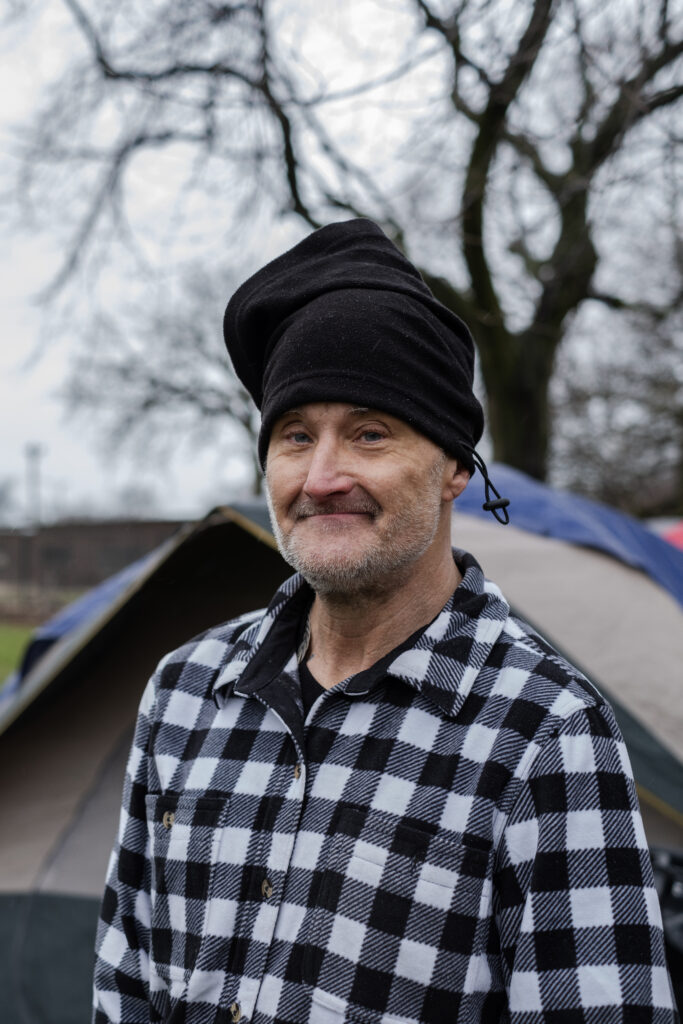
Franklin has had an apartment on the South Side for the past six months, but he still travels the length of the city to see the friends he made during his time living in the park. During the five months he stayed there, he acted as an elder and referee among the dozen other unhoused people nearby. He says he would try to break up fights and defuse aggression.
“I miss the people,” Franklin says.
Last year, Franklin ended up back in Chicago after his father underwent open-heart surgery. He had been living in Moab, Utah, but he wanted to see his dad, who passed away in December 2023. “I spent almost every day just going to the doctors for both of us and spending time with him, getting to know my dad,” Franklin says. Sometime during their reunion, Franklin ended up staying in the park. “Chicago swooped me up a little bit. But I felt if I left, my dad would pass.”
Assistance from the Federal Housing Authority helped; in September, people from the agency came to the park looking to fast-track people into housing before winter. Franklin had just been hospitalized with a respiratory bug, and the agency connected him with an apartment near 87th Street.
“I am so blessed,” Franklin says.
Passing the buck
Franklin’s experience differs greatly from what many unhoused people across the United States are facing. In April of this year, the Supreme Court took up an appeal from Grants Pass, Oregon — a town of 40,000 people (including 600 unhoused) with ordinances that criminalize sleeping outside. Similar laws have been taking shape throughout the country in California, Florida, and elsewhere. The Grants Pass appeal has support from Democrats and Republicans, including California Governor Gavin Newsom.
At one Grants Pass city council meeting, the council president said the ordinance’s goal would “make it uncomfortable enough for [homeless people] in our city so they will want to move on down the road.” Violators start with a $295 fine, which increases to $537.60 if unpaid. Two violations can lead to 30 days in jail and more fines.
Grants Pass and other towns taking the criminalization approach say they worry about increases in crime, disease, fire, and hazardous waste. But others argue that such ordinances will only increase vicious cycles of homelessness and poverty. One of the original plaintiffs in the Grants Pass case was an unhoused woman named Debra Blake, whom police fined three times in one morning in March 2020. She raked up $5,000 in fines — roughly the cost of three months’ rent in the city.
In San Francisco’s Mission neighborhood, residents and business owners have taken the encampment issue into their own hands — with 2,000 oversized planters. It’s a form of defensive architecture, an attempt to deter people from sleeping on the sidewalks.
In an interactive report from The Mission Local, some residents spoke about drugs and prostitution happening amongst the unhoused. “We pay a lot to live here, and it’s like I’m living in a slum,” one woman told reporters.
For others, the displacement is akin to treating a symptom instead of the root cause.
More than housing
Halfway across the country from the Mission’s planters, many groups that are making an impact in Chicago — government, nonprofits, and businesses — have taken a different tack.
Mayor Brandon Johnson recently appointed Sendy Soto as the city’s first chief homelessness officer. Soto’s primary responsibility: to develop a five-year plan to end homelessness in Chicago.
A grant from more than 30 philanthropic partners — under the umbrella Chicago Funders Together to End Homelessness — funds Soto’s position.
“Chicago joins a small group of cities that have taken the bold step of creating a dedicated position that ensures every resident has access to safe, stable, and affordable housing,” Soto said at a press conference announcing her appointment. “I am proud that we are making this announcement at the newly renovated Lawson House, which stands as an example of the preservation of affordable housing units that we need to see across the city.”
The $128 million renovation of Lawson House in the city’s wealthy Gold Coast neighborhood creates more than 400 affordable apartments. About 300 units will be rented out with subsidies from the Chicago Low-Income Housing Trust Fund, Chicago Housing Authority, and the U.S. Department of Housing and Urban Development (HUD). Current rentals in the Gold Coast range from $1,750 for a studio to $10,250 for a four-bedroom.
“Affordable housing still doesn’t mean affordable for most people,” says Tam Perry, PhD, associate professor of social work at Wayne State University. “And these issues cut across ages — at 30, 40, 50 you worry about affordable housing.”
Perry adds that there are “huge gaps” between the number of units needed and the number that the federal government funds. She belongs to a coalition that meets monthly called Senior Housing Preservation – Detroit. The group originated in 2013 after a single building evicted more than 100 older adults.
“Why aren’t we having more traction from private organizations?” Perry asks. “[Because] it’s often easier to run a place that feeds hundreds or thousands of people meals each week than one that gives 20 people a house. Housing is expensive and complicated.”
Healthy housing efforts
Lawson House is one of multiple affordable housing efforts in Chicago. And some of the efforts are stemming from local health systems, which see value in not only connecting people with affordable housing but also case workers who can help oversee their medical needs, including mental health support.
An estimated 21% of unhoused people have a significant mental health disorder, according to the Substance Abuse and Mental Health Services Administration. And insurance providers in the U.S. offer much lower coverage for mental health than they do for physical health conditions, according to a paper published in the British Journal of Psychology Bulletin. Out-of-pocket costs for psychiatry can run $400 per visit, for example. And though many unhoused people have enrolled in Medicaid, not many psychiatrists accept Medicaid patients.
For unhoused people, seeking, scheduling, keeping track of, and getting to those appointments often falls far down the priority list behind more basic needs. And this is where some in healthcare see an opportunity to help.
“We’re a public hospital, and because we serve the most vulnerable in the state, we really needed to address this,” says Stephen Brown, UI Health’s director of preventive emergency medicine and Better Health Through Housing. “[The program] really resonated with our employees, too. We want healthcare to be more engaged in the subject of homelessness.”
In 2015, University of Illinois Health invested $250,000 to establish housing for 26 unhoused people for one year in an attempt to connect people with case managers and ongoing medical care, instead of relying on the emergency department. UI Health saw system costs drop an average of 27% for the people involved in the program, along with a 41% drop in emergency department use, and a 52% drop in inpatient use. It’s now the longest running healthcare-to-housing program in the country.
Better Health Through Housing continues today in partnership with the Center for Housing and Health’s Flexible Housing Pool, a cross-sector investment program inspired by a housing subsidy fund in Los Angeles. The LA fund initially housed 350 people, with a substantial grant from Hilton Foundation. With the city and county as major investors in the fund, as well as private philanthropy from such organizations as the J.B. and M.K. Pritzker Family Foundation, Chicago’s fund has financed housing for 1,300 since 2019, and now has a goal of housing 1,000 people a year.
UI Health contributes about $350,000 annually to the Flexible Housing Pool and involves employees in the investment. “We had a supplies drive — toiletries, towels, kitchen utensils. We ended up with 12 pallets of stuff,” Brown says. “There was undoubtedly a lot of employee pride. It enhanced our employee satisfaction scores because they said we were putting our money where our mouth is — a demonstration of health equity.”
UI Health is also using computer programming to determine exactly how many unhoused individuals are coming through the hospital. In 2015, system leaders thought 75 homeless people had utilized the emergency department. By analyzing a variety of diagnostic codes, physician notes, and addresses in their electronic health medical record system, Epic, they’ve identified more than 20,000 patients as homeless, going back to 2010.
“It speaks to the challenges that hospitals face in addressing the social determinants of health. We need to do a better job of identifying unhoused people. We had a substantial undercount until this technology,” Brown says, adding that UI Health will offer other hospitals the same programming technology at no cost.
But for things to truly improve, Brown says government agencies need to change their thinking. “They have a scarcity mindset, just plugging holes,” Brown says “You’ve got people who have been working at these agencies for years and firmly believe they’re never going to solve this. How do we think about it from goals and then work backwards?”
Sinai Chicago has been working around similar goals for the past decade. The vacant buildings and lots surrounding the West Side hospital were “a breeding ground for not-great stuff,” says President and CEO Ngozi Ezike, MD. By partnering with the Chicago Community Trust and other philanthropic groups, the system developed the Ogden Commons, a medical, retail, and housing development that includes 92 units of affordable housing. It’s the Ogden community’s first development of its kind in decades. The first occupants will move in this summer.
“We want inclusive efforts and investment. And it is just that — an investment. You’re putting in now to get an important and valuable return. It’s not something that the leader will see, but we have to do what is best for our society in the long term,” Ezike says. “These things take so long to come to fruition, and I wasn’t here 10 years ago when they were dreaming this up.”
Ogden Commons features healthcare offices, a restaurant and coffee shop, and a Wintrust Bank. “If we can create this thriving community where people can get their healthcare, bank, get their coffee, socialize, it’s key to good health. It’s literally all tied together,” Ezike says. “A healthy community produces healthier people. We’re going to help build the community we want to see.”
Ezike says for many, homelessness involves a lack of affordable housing but also complex health issues. “There have been a lot of solutions where people are moved out of the city, far, far away. So to have affordable housing in the city is a game-changer. We see the cranes downtown, and that’s beautiful, but it’s not affordable for the majority of people in this country,” she says. Ogden Commons and projects like it, she adds, “will help build back the communities that have suffered for so many decades.”
Building better communities
Illinois Chief Homelessness Officer Christine Haley joined Gov. J.B. Pritzker at a press conference recently to announce a $50 million funding increase for a state program to prevent and end homelessness. She said Illinois needs to “reflect wholly” on the root causes of its disparities and stressed that homelessness is not “caused by hanging out with the wrong crowd and making bad decisions.”
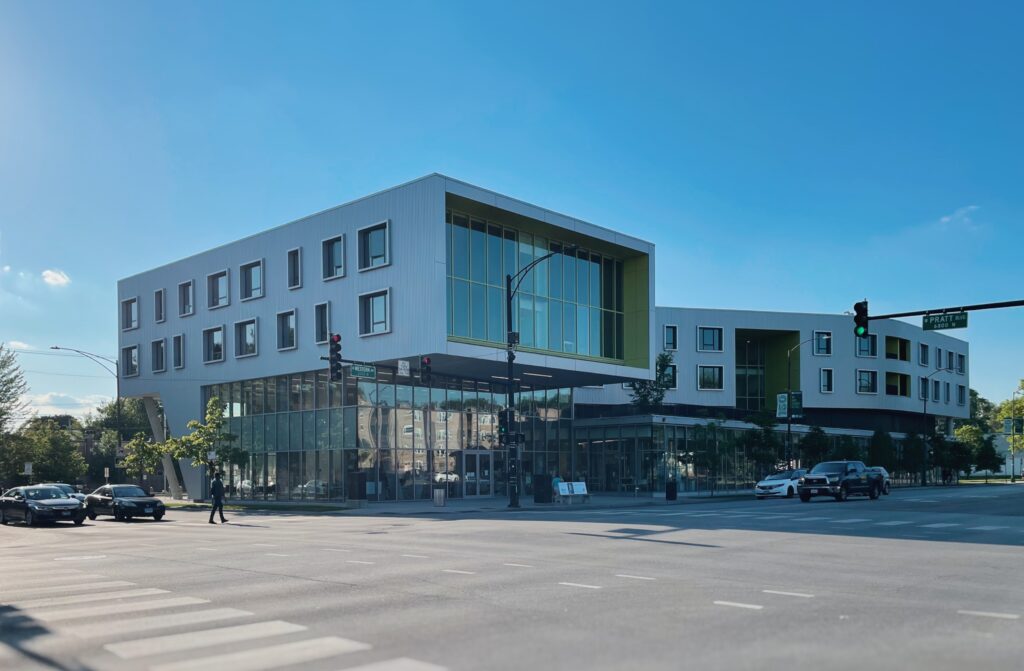
Yet, hospitals aren’t the only places making housing investments. In 2016, Chicago began revitalizing older libraries to include affordable housing. The city opened three library-and-housing facilities in 2019, including a senior housing project called Northtown Library and Apartments in West Ridge, a North Side neighborhood. The building features a Chicago Public Library on the first floor and 44 housing units on two additional floors.
The initiative builds off libraries as community gathering spaces and service centers. According to HUD, the three projects in Chicago garnered more community support than standalone affordable housing developments. The project tab: $34 million, financed through low-income housing tax credits, the Chicago Housing Authority, and other sources.
“Part of the journey is helping local communities and policy makers understand the value of disrupting homelessness. All members of a community benefit when affordable housing is obtainable,” says Judith Gonyea, PhD, associate dean and professor at Boston University School of Social Work, who sees government efforts to address homelessness as one part of a broader strategy.
“The solution involves adopting a shared sense of responsibility between government, businesses, and communities,” Gonyea adds. “Federal and state policies are important, but it also involves local efforts to transform communities so that all people can age safely and comfortably regardless of income or ability.”
One independent group in Boston has been working on housing with older adults specifically in mind — and they’ve had a huge impact. Decades ago, seven women in Boston — all over age70 — formed the Committee to End Older Homelessness, now known as Hearth. The group focuses on permanent, supportive housing. After three decades of work, they have housed more than 2,700 older adults.
“When you look at the cost of use of ERs, premature placement of people in nursing homes, jails — which are very expensive — it was worth investing in permanent housing,” Gonyea says. “Stable housing contributes to better physical health through improved diet, sleep, and medication management, as well as better emotional health through a greater sense of security and safety and the ability to build social connections.”
Policy makers in Houston got the message. The city had one of the largest unhoused populations in the U.S. a decade ago, with HUD declaring it a “priority community.” Today, the city has seen its homelessness population drop by 64%, from 8,500 people unhoused on a given night to 3,200 currently.
Houston did it by effectively using federal money, partnering with the county and more than 100 nonprofits, with an emphasis on the core problem, housing. After a year, 90% of people remain in their homes, which costs about $18,000 annually per person. The cost of staying on the street is as much as four times higher with jail time, emergency visits, and more.
Unhoused at the end
The cities and organizations that have invested in housing tout multiple success stories. But what happens when someone living on the street is nearing the end of life?
In some cases in Chicago, people get fast-tracked into housing. In Salt Lake City, they may end up at The INN Between — a medical respite and end-of-life care facility specifically for unhoused people. Medical clinics, police departments, churches, and homeless services agencies refer people to The INN Between.
People typically come in with lung disease that requires oxygen, insulin-dependent diabetes, cancer, wounds, colostomies, and other conditions that require ongoing care. Since the organization began in 2015, The INN Between has helped more than 100 people die with dignity, in a safe place, who otherwise would have died on the street.
A woman named Patty shares her story in a video about the program. She had been homeless on and off for two decades. When she arrived at The INN Between, she was going blind from cataracts and had cancer. “I’ve had eye surgeries, ear surgeries, chemo, and radiation, which out on the streets I really wouldn’t have been able to do,” Patty says in the video. “It was really hard for me to ask for help because it just isn’t there usually when you ask for it.”
The INN Between opened in 2015 with 16 beds, after a social worker and nurse working in a shelter spearheaded the development. Today, the program runs on a $1.9 million budget, with 50% from state or city grants, 22% from businesses and foundations, and the rest from other channels. When The INN Between opened a new location with 25 beds in 2018, every bed was full within three weeks.
Back in Chicago’s Uptown neighborhood, end-of-life thoughts don’t stray far from Scott Anthony Franklin’s mind. He reflects on his father’s death this past December and thinks about his own — whenever that may happen.
 Franklin also writes about it and can recite many of his poems from memory, including one called “Angelic Traces.”
Franklin also writes about it and can recite many of his poems from memory, including one called “Angelic Traces.”
He says he’s working on a new set of poems and regularly visits the library to type them up. His goal: to write 100 of them, in honor of the man whose last name he shares — Benjamin Franklin, featured on the $100 bill.
“A few of them are religious in their connotation,“ Franklin says of the poems. “My grandmother was Catholic, so that’s how I learned to read — from the dictionary and the Bible. It strengthened [my mind and] my lungs as well.”
As he reflects on his life, Franklin’s mixed feelings about homelessness bubble up. “I have a beautiful place, and I’m making it work. But I’m lonely,” he says of his apartment. Yet, he adds, “I liked living on the street because I know now that I could survive it.”
Survival is key to the story Franklin tells about himself, since day one.
This series is published as a partnership between Caregiving Magazine and Chicago Health Magazine. It was written with the support of a journalism fellowship from The Gerontological Society of America, The Journalists Network on Generations, and The John A. Hartford Foundation.
Series illustration by Dan Leu. Main photo by Jim Vondruska.

